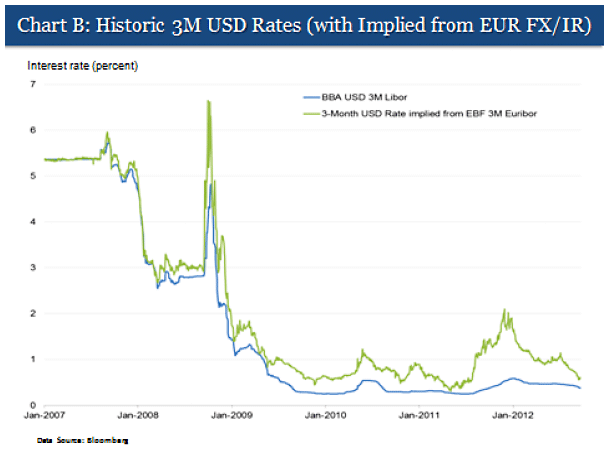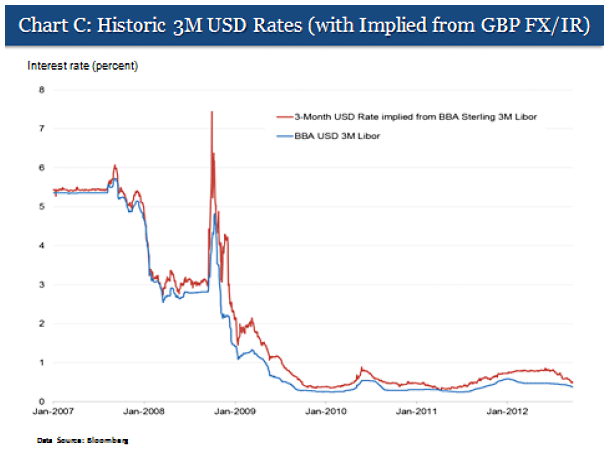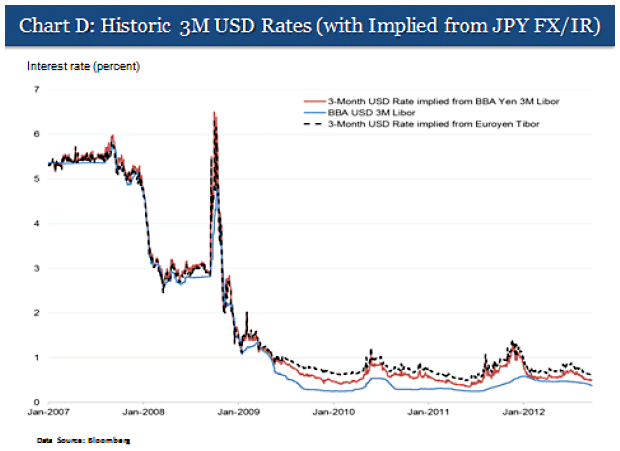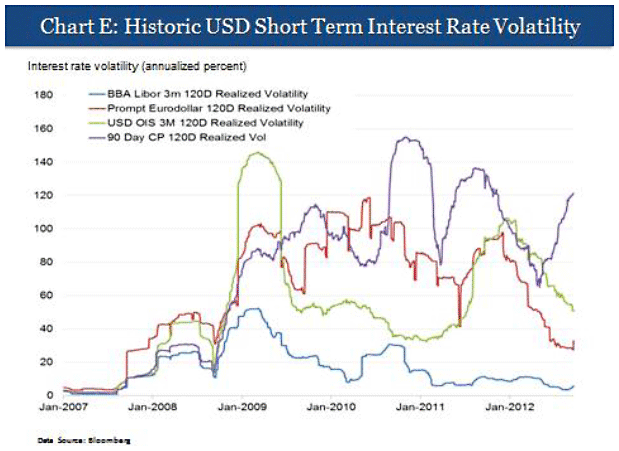Introduction
In a statement issued at the Group of 20 (G20) meeting held on November 4-5, 2012, finance ministers and central bank governors welcomed "actions taken and ongoing reviews to identify measures to address weakness and restore confidence in benchmark and index setting practices" in reference to financial benchmarks such as the London Interbank Offered Rate (LIBOR). Problems with LIBOR became widely known after Barclays PLC, Barclays Bank PLC, and Barclays Capital Inc. (hereinafter collectively referred to as "Barclays") were ordered to pay $200 million in penalty for attempted manipulation of and false reporting concerning benchmark interest rates. In this article, I would like to show that this, in fact, is a repetition of the same old problem that had existed long before the unfolding of the Barclays case, outlining similar enforcement cases in the past. I will also discuss new developments in market regulators' efforts, particularly, a gradual shift in recent years from the conventional, indirect supervision through exchanges toward one in which market regulators directly supervise the setting of benchmark indices.
Barclays case as defined under U.S. laws
On June 27, 2012, the U.S. Commodity Futures Trading Commission (CFTC) ordered Barclays to pay a $200 million civil monetary penalty for attempted manipulation of and false reporting concerning benchmark interest rates, and to improve its internal control and business process to ensure integrity.
The order was issued pursuant to the Commodity Exchange Act (CEA) that mainly regulates the trading of derivatives excluding equity derivatives. Section 9(a)(2) of the CEA makes it a punishable felony to knowingly deliver or attempt to deliver false information. Specifically, it is prohibited to knowingly deliver or cause to be delivered for transmission by such means of communication as telegraph and telephone false or misleading or knowingly inaccurate reports that affect or tend to affect the price of any commodity in interstate commerce. Meanwhile, Sections 6(c) and 6(d) of the CEA provide that manipulation or attempted manipulation of market prices is subject to civil penalties such as fines. More specifically, it is provided that if the CFTC has reason to believe that any person has manipulated or attempted to manipulate prices in interstate commerce, it may serve a complaint and impose, among other things, civil monetary penalties.
The CFTC imposed civil monetary penalties and other sanctions on Barclays for violation of Sections 6(c), 6(d), and 9(a)(2). The provisions of the respective sections were applied as follows:
[Section 9(a)(2): Delivery of false information]
- Barclays submits information on the U.S. dollar, Japanese yen, and British sterling, with intention and on a daily basis, to the British Bankers' Association (BBA) and the European Banking Federation (EBF)--in practice to Thomson Reuters as its agent--for calculation of LIBOR and the Euro Interbank Offered Rate (Euribor) respectively.
- Information submitted by Barclays on a daily basis is market information concerning the costs of borrowing unsecured funding that affect or tend to affect prices in interstate commerce.
- Information submitted by Barclays was false information derived for the purpose of benefiting derivatives trading positions or propping up its financial standing--i.e., based on factors unrelated to the cost of borrowing funds--on a continuous and repeated basis.
[Sections 6(c) and 6(d): Attempted manipulation]
- Presence of intent to affect the market indices can be evidenced by records of communication between traders wishing to benefit their derivatives trading positions and submitters of LIBOR and Euribor information. These records also prove that the submitters made false reports knowingly.
- Barclays' overt act in furtherance of the intent to affect the market indices can be evidenced by the fact that the derivatives traders requested the submitters to post a certain rate in submissions so as to benefit their trading positions, and the submitters reflected the traders' requests on the submissions.
Past cases constituting false reporting and manipulation
The Barclays case has awakened public awareness to the various flaws embedded in the setting of benchmark indices. In fact, however, they are nothing new. Since 1995, the CFTC has brought a total of 40 enforcement actions against false reporting under Section 9(a)(2) and/or manipulation under Sections 6(c) and 6(d) of the CEA, and the Barclays case is just one of them.
Here, let's take a look at the past 40 cases listed in Table 1 below. Of the 39 cases excluding the Barclays case, 37 cases concern natural gas prices, one on crude oil prices, and the remaining one on feeder cattle prices. In the cases concerning natural gas prices, natural gas traders submitted false information to a private-sector publisher that calculates benchmark price indexes, thereby spreading false information through its publications. The case involving crude oil prices followed the same pattern. Meanwhile, in the case involving feeder cattle prices, feeder cattle traders, etc. provided false information to the U.S. Department of Agriculture (USDA) for inclusion in its public cash market feeder cattle report, which is referred to in the trading of feeder cattle futures contracts on the Chicago Mercantile Exchange (CME), whereby false information was spread through the USDA report.
In each of these cases, false information was submitted by manipulators to an index provider spread via the index provider although the index involved may be different--it may be the one for interest rates, natural gas prices, or feeder cattle prices--depending on the case. This indicates that the flaws in index calculation as seen in the Barclays case are not limited to LIBOR.
[PDF:96KB]
Past approach
In the past, the market regulators have taken an indirect approach in addressing the problem of benchmark calculation, supervising index providers not directly but through exchanges under their supervision. For instance, in cases where a cash-settled derivatives contract is listed on an exchange, the market regulators would monitor the movement of the referred benchmark indices to detect acts that may constitute the delivery of false information and/or manipulation. And if any of such unlawful acts is confirmed, enforcement action would be taken against the person(s) and/or entity(ies) involved.
In the case of the U.S. dollar LIBOR, the CFTC monitors the movement of three-month Eurodollar futures contracts because the U.S. dollar LIBOR is referred for their settlement, and they are traded on the CME under the supervision of the CFTC. In monitoring such cash-settled derivatives contracts, the CFTC, for instance, examines these surveillance questions:
(1) Whether the movement of the referred benchmark index for the settlement of the cash-settled derivatives contracts is consistent with that of other similar indexes;
(2) Whether traders with large positions can affect the referred benchmark index for settlement of the contracts; and
(3) In the case where submissions from a particular submitter deviate significantly from those submitted by others, whether the submitter is in a position to benefit from doing so.
Of the three viewpoints listed above, (1) is clearly observable in Charts B and E below, which were presented by CFTC Chairman Gary Gensler to the European Parliament on September 24, 2012.
Charts B, C, and D compare the U.S. dollar LIBOR with the U.S. dollar borrowing rates implied from foreign exchange rates respectively with the euro, British sterling, and Japanese yen based on the covered interest parity (CIP). Since there is perfect capital mobility between the euro area, the United Kingdom, Japan, and the United States, covered interest parity is normally maintained by arbitrage. However, Charts B, C, and D show that the U.S. dollar LIBOR has deviated from the implied U.S. dollar borrowing rates perpetually since 2008.



Meanwhile, Chart E, which compares the volatility of the U.S. dollar LIBOR and that of other U.S. dollar-denominated short-term interest rates, also shows that the U.S. dollar LIBOR alone experienced modest volatility in a move inconsistent with that of others.

This sort of phenomenon that cannot be explained by economic rationality provides a cue for market regulators to focus their attention on certain observable transactions and prompts close monitoring, for instance, of exchange-traded cash-settled derivatives contracts. Through this approach, they have detected and taken law enforcement actions against a series of fraudulent trade practices such as false reporting.
Future approach
However, there has been a shift in recent years from such indirect approach--i.e., supervision through exchanges--to one in which market regulators supervise benchmark calculation directly. The shift accelerated following the revelation of the Barclays case.
The most pioneering effort to address the problem of benchmark calculation is "Principle for Oil Price Reporting Agencies" published by the International Organization of Securities Commissions (IOSCO) in October 2012 in response to the G20 leaders' Cannes Summit Final Declaration in November 2011. These principles call on oil and other commodity index providers to implement these principles voluntarily, and, if IOSCO finds that they are not effective, direct governmental regulations are to be considered. The measures to be taken by index providers include the following:
- Ensure the transparency of procedures by which index providers assess indices;
- Give priority to concluded transactions in assessing indices;
- Improve governance;
- Ensure the proper documentation and retention of information concerning the process of index assessment;
- Make available to relevant market authorities audit trails and other related documentation; and
- Have external auditors perform an audit of compliance with requirements under the principles and publish the results.
G20 finance ministers and central governors welcomed these principles at their meeting in November 2012.
As initiatives launched after the Barclays incident came to light, the European Commission and the United Kingdom have taken legislative steps to address various flaws in the process of benchmark index calculation. The European Commission has amended its directive on criminal sanctions for market manipulation, whereby the delivery of false information via benchmark index providers is explicitly made subject to criminal sanctions. At the same time, it was soliciting public feedback on issues concerning benchmark calculation (through November 29, 2012) to improve the relevant regulatory framework. In parallel with this, the United Kingdom on September 28, 2012 published the Wheatley Review of LIBOR (final report), a set of policy recommendations for LIBOR reform. The report recommends, inter alia, the following:
- Administering LIBOR and submitting to LIBOR should be regulated under the Financial Services and Markets Act 2000, and the UK Financial Services Agency should be given power to prosecute manipulation or attempted manipulation of LIBOR;
- The BBA should transfer responsibility for LIBOR to a new administrator, which should be selected through a tender process to be run by an independent committee convened by the regulatory authorities, and the new administrator should be required to fulfill specific obligations including proper governance as well as surveillance and scrutiny of submissions;
- The compilation and publication of LIBOR for those currencies and tenors for which there are insufficient trade data should not be made; and
- Discussions should take place within Europe and at the Financial Stability Board (FSB) on the future of LIBOR or its alternatives and to establish principles for effective global benchmarks.
At the moment, the Financial Services Bill, which is designed to implement the proposed reform, is being deliberated in the House of Lords of the UK Parliament.
Furthermore, the IOSCO set up a Board Level Task Force on Financial Market Benchmarks on September 14, 2012, and work is underway to identify problems with benchmark calculation and establish principles for supervising benchmark index providers. The task force is slated to complete the work in or around the first quarter of 2013.
On an international level, G20 finance ministers and central bank governors at their meeting in November 2012 issued the following statement, "In relation to LIBOR, Euribor and other financial benchmarks, we welcome actions taken and ongoing reviews to identify measures to address weaknesses and restore confidence in benchmark and index setting practices and welcome the coordinator role of the FSB as agreed."
Meanwhile, in Japan, the problem of false reporting to index providers was deliberated in the Commodity Exchange Committee of the Industrial Structure Council, a government advisory panel, in 2008, following the revelation of a series of incidents listed in Table 1. In the course of the deliberation, it was pointed out that market players can make profits in futures and cash markets by reporting false information to index providers. As part of its policy recommendations put forward subsequently, the committee concluded as follows, "Considering the emergence of various forms of market manipulation, it is appropriate to establish regulations governing a broad range of market manipulation practices... to ensure the fairness of price formation at exchanges." These recommendations served as the basis for considering amendments to the Commodity Exchange Act (currently, the Commodity Derivatives Act). It is believed that false reporting to index providers constitutes an act punishable under Article 356, paragraph 1 of the act.
Conclusion
The Barclays incident shed light on a typical market manipulation scheme in which manipulators rake in unfair profits in derivatives and other markets by delivering false information to benchmark index providers, thereby spreading such information throughout the markets. However, this pattern of manipulation had been in existence long before that.
Discussions will be taking place at various levels--for instance, at international organizations and within respective countries--to explore effective ways of enforcement against manipulation and supervision of benchmark index providers. In cases where a country affected by market manipulation is different from the one supervising the provider of the manipulated index or the exchange on which contracts referred to the manipulated index is listed, what sort of enforcement framework is effective? With this question in mind, I would like to observe the forthcoming discussions.
The original text in Japanese was posted on November 13, 2012.
December 5, 2012


